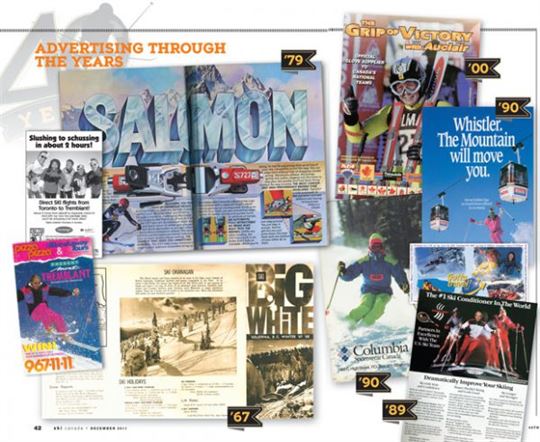I can’t remember prices from last season let alone decades ago,” Mike Howard admits when I ask if he thought skiing really is more expensive nowadays. Mike has owned iconic Sepp’s Skis & Snowboards in Kingston, Ontario, for more than a decade, but he started as a weekend high school student when the shop opened in 1972, the year after Ski Canada started publishing. By the time I’d graduated university in 1984, he’d sold me a favourite pair of Dynastar Omeglass, Explode-a-Matt Marker bindings and some used Franz Klammer World Cup Do-Not-Fits.

“Equipment, I don’t know, but I’m inclined to think lift tickets have increased in today’s dollars,” says Mike, “but it’s difficult to compare when the majority of skiers now are on multi-day or multi-resort passes.” We banter about slow double chairs and spring-loaded T-bars fed by massive lift lines, and question how much skiing actually was done “in the good old days,” and together decide that when inflation is considered, gear at least has likely decreased in price.
Michael Kay with MDVCanada (Marker Dalbello Völkl) concurs. “I don’t think ski prices have gone up at all,” says Michael. “If you go back 16 years, the price of a 2005 Mantra was $899. The price of a 2021 model year M6 Mantra is $849.” Then he adds smoothly, “And that’s with all the new technology: 3D radius sidecut, tailored Titanal frame and carbon tips…” A 2005 Marker Comp 14 was $329 (or $435 today with inflation). With comparable DIN settings, a 2021 Marker Griffon is $274.
Calgary’s Brian Callow, one of the keenest skiers I know, is a treasure of mildly interesting ski conversation. While I was skiing in wet jeans and a David S. Reid Powder Shirt in 1980, Brian forked out $180 for Schneiderhosen stretch pants (Wengen version), which the Bank of Canada hangs on today’s clothing rack at about $580. In a definitive “What were we thinking?” skier’s moment, the price tag on his 1989 Descente big-shouldered hot-blue with pink and yellow one-piece would ring in close to $1,600 today. He tells me he bought it on sale. At $51 an hour in today’s dollars, a private lesson at Louise, Brian’s favourite hill, was a steal.
A 1966 newspaper ad at the Whistler Museum enticed Vancouver skiers north to the new resort with $4 weekday and $5 weekend tickets. (That’s about $32 and $40 today.) Whistler’s “4 Miles of Lifts” were made up of the gondola, a chairlift and two T-bars. Accoutrements: “A ski Shop, Rentals and Cafeteria” and the PGE train left North Van at 8:00 a.m. So, was four lifts for $40 on one-tenth of the terrain and no village better?
Karen Naismith, president of Skican, was young, just like ski resorts in Western Canada, when her lovely dad, Robin, started the iconic tour operation in 1969. In those days, Eastern Canadians were far more likely to head south of the border and to the Alps for ski holidays, but by 1973 Skican was selling a seven-day stay, all winter, at Banff’s Mt. Royal Hotel, airfare (with two 70-pound bags), transfers, resort shuttles and a seven-day lift pass for $275, or about $1,660 with inflation.
Throughout much of the 1980s the company’s popular $595 (about $1,200 today) “Whistler Express” ski holiday “was a huge seller,” says Karen. It went up in 1989 to $695, lasted almost another decade, and included seven nights, a six-day lift pass, transfers—and a Wardair steak done to your choice. “In the busiest years,” says Karen, “Skican had about 20,000 people a season going to Whistler. We also had a snow guarantee for early and late season. Imagine trying to offer something like that today?”
Imagine the cost of skiing in 30 or 40 years.



